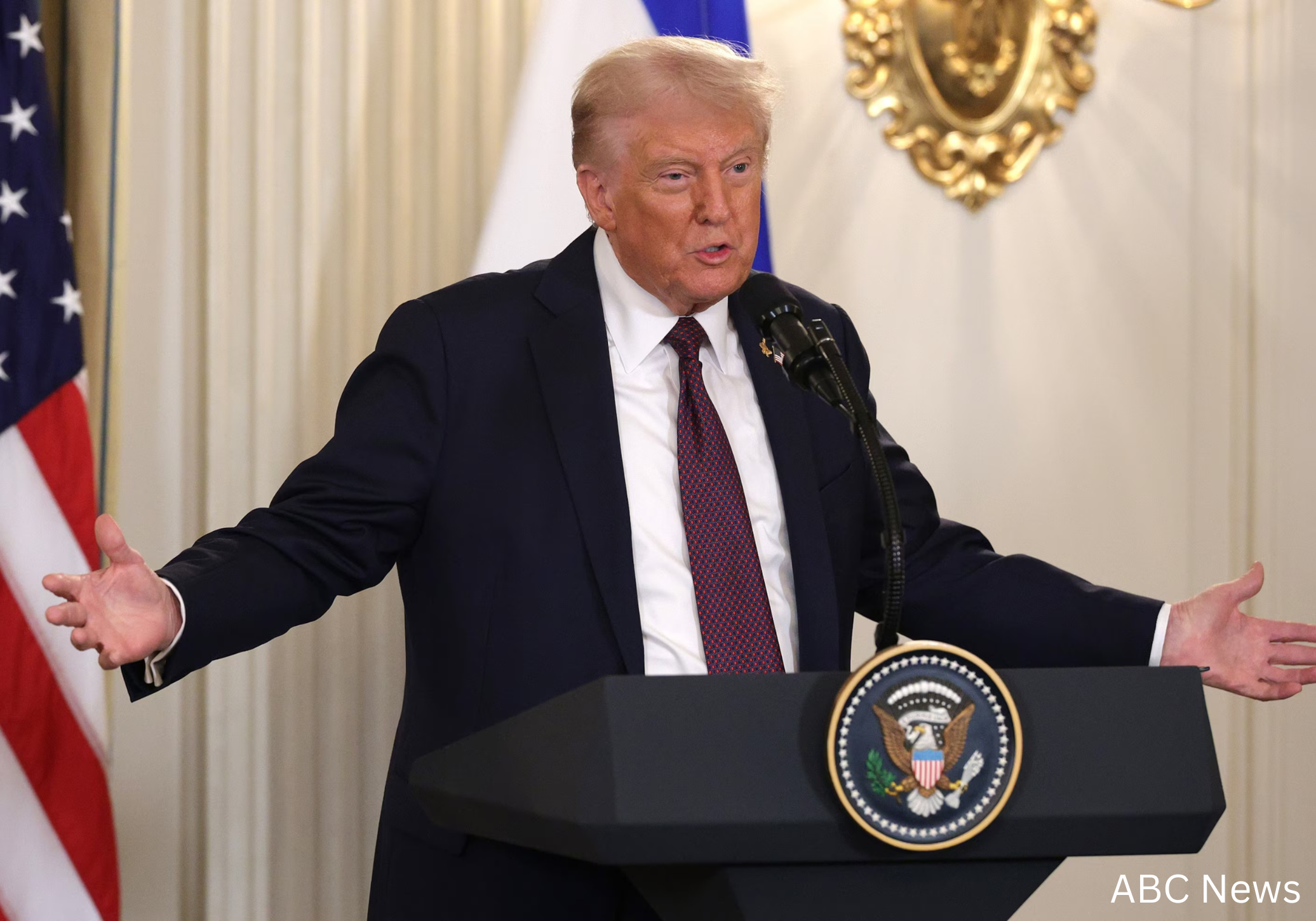Former President Donald Trump has put forward a comprehensive plan aimed at ending the devastating conflict in Gaza, with Israeli Prime Minister Benjamin Netanyahu by his side. The proposal, backed by both the United States and Israel, envisions a complete cessation of hostilities, the release of all hostages, and a fundamental reshaping of Gaza’s governance. Yet despite the ambitious vision, the plan faces significant hurdles, most notably Hamas’s longstanding refusal to surrender arms or relinquish control over Gaza, leaving the group at a critical crossroads.
Origins of the Plan
Trump’s Gaza proposal was developed with input from key international figures, including former British Prime Minister Tony Blair. In August, Blair participated in high-level discussions at the White House alongside Jared Kushner, Trump’s son-in-law, who has played a recurring role in Middle East diplomacy.
Over the following weeks, extensive consultations took place with Israel and Arab countries to refine the plan and build international support prior to its public announcement. These diplomatic efforts sought to create a framework that could end two years of conflict while addressing the humanitarian crisis in Gaza and the complex political realities in the region.
Immediate Steps Proposed
The first stage of the plan is clear: an immediate end to the war upon agreement. Unlike previous proposals, which often sought a temporary truce first, Trump’s plan calls for a direct cessation of hostilities, signaling an urgent push for resolution.
Hamas would release all hostages captured during the Oct. 7, 2023 attacks within 72 hours, including approximately 20 living captives and the remains of around 25 others. In return, Israel would free roughly 250 Palestinian prisoners serving life sentences and about 1,700 others detained during the war.
Israeli forces would then withdraw to pre-agreed lines while maintaining a security buffer within Gaza. The international community would simultaneously increase humanitarian aid to address the severe shortages in the territory.
Reshaping Gaza’s Governance
Beyond immediate conflict resolution, the plan proposes a radical transformation of Gaza’s governance. Hamas’s authority in the enclave would end, replaced by a “technocratic, apolitical Palestinian committee.” This transitional administration would operate under the oversight of a “Board of Peace,” chaired by Trump and including Blair in a leadership role.
Hamas members willing to commit to peaceful coexistence and surrender their weapons would receive amnesty, while those choosing to leave Gaza would be provided safe passage into exile. Additionally, an international force, developed in coordination with Arab allies, would be deployed to train and maintain a long-term Palestinian police force, providing internal security for Gaza.
However, critical questions remain unanswered: who would lead the Gaza committee, how would militants unwilling to disarm be handled, and what would be the duration of this transitional government? The plan also envisions a potential future role for the Palestinian Authority, contingent on comprehensive reforms.
Hamas’s Response and Challenges
While Netanyahu has publicly endorsed the plan, Hamas remains the decisive actor. Analysts suggest that many terms will be extremely difficult for the group to accept. Disarmament represents a major red line, and the end of Hamas’s nearly two-decade rule in Gaza constitutes a profound political blow.
Furthermore, the plan’s stipulation that hostages be released within 72 hours raises concerns among Hamas leaders about losing leverage. Should they comply, Israel could theoretically resume military operations or violate other aspects of the agreement without fearing for the hostages’ safety.
Hamas is reportedly seeking a “dignified exit” from the conflict, exploring ways to mitigate political and operational losses while meeting regional and international pressures. As Tamer Qarmout, a professor of public policy at the Doha Institute for Graduate Studies, observed:
“The entire region now is putting pressure on Hamas and is aligning itself with this initiative as well.”
Diplomatic and Regional Implications
Trump’s plan highlights a rare alignment among Israel, the United States, and key Arab states, signaling a potential shift in regional diplomacy. By involving Arab nations in consultations and emphasizing humanitarian relief, the initiative aims to foster broader regional support and create a credible framework for peace.
However, the success of the plan depends not only on Hamas’s willingness to negotiate but also on the capacity of all parties to implement and enforce agreements amid long-standing distrust. Even if Hamas agrees, monitoring compliance, maintaining security, and managing political transitions in Gaza will remain highly challenging tasks.
Conclusion
Trump’s Gaza plan represents an ambitious effort to end years of bloodshed and transform the political landscape of the region. Immediate cessation of hostilities, the release of hostages, and the establishment of a transitional governing authority illustrate the plan’s broad vision. Yet the political, operational, and strategic obstacles—particularly Hamas’s resistance—pose serious challenges.
As Hamas deliberates its response under pressure from the United States, Israel, and Arab nations, the coming days could determine whether a fragile path toward peace in Gaza can finally be realized. The stakes are high, not only for the region’s political future but also for the civilians and hostages caught in the crossfire of nearly two years of conflict.




